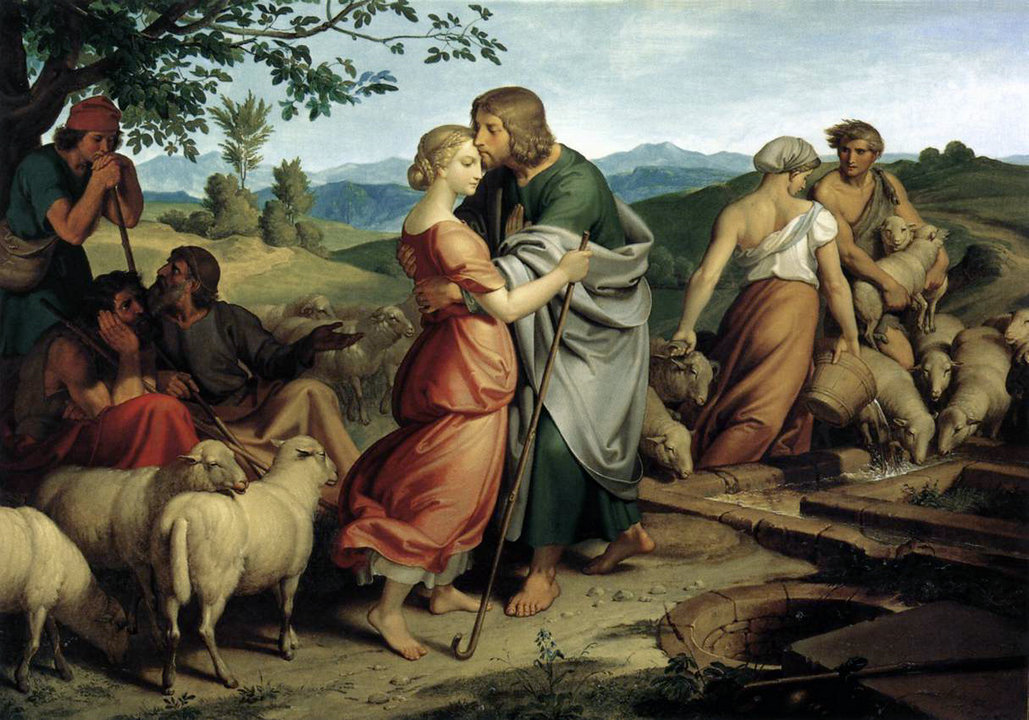Joseph von Führich, also known as Josef Ritter von Führich (February 9, 1800 – March 13, 1876), was a Bohemian-Austrian painter of religious themes (Nazarenes) and historians., belonging to the movement of the Nazarenes.
Führich has been described as a Nazarene, a religious artist who helped to restore the ancient spirit of Dürer, representing numerous themes of the scriptures. Without the strength of Cornelius or the grace of Overbeck, he painted with great skill. His mastery of distribution, form, movement, and expression was considerable.
Essentially creative as a landscape artist, he had no great sense of color; And his monumental paintings were not as fortunate as the small ones. His fame extended beyond Vienna, and his illustrations of the work of Tieck Genoveva, the Lord’s Prayer, the Triumph of Christ, the Way to Bethlehem, the Succession of Christ according to Thomas of Kempis, the Prodigal Son, became well known. , And the verses of the Psalms. His Prodigal Son, in particular, is remarkable for the way he personifies evil.
He was the son of the painter Wenzel Führich, from whom he also received his first artistic lessons. He had a total of eleven siblings, including the painter Maria Antonia Führich. In addition to his father’s instruction, Führich continued to be autodidactic and excited a great deal with two pictures at an art exhibition in Prague in 1819.
Supported by the owner of the rule Kratzau, the patron Count Christian Christoph Clam-Gallas, it was possible for Führich to visit the Kunstakademie Prag. There he was among others. The student of Joseph Bergler. Already during this study, Führich contributed to the furnishing of various churches; et al Chanowitz, Liebenau, Nixdorf and Raspenau. In addition, according to the instructions of his teachers, he created illustrations for works by Joseph Marius von Babo (“Otto von Wittelsbach, Pfalzgraf in Bavaria”), Johann Wolfgang von Goethe (“Erlkönig” and “Hermann und Dorothea”), Friedrich Schiller, Ludwig Tieck (“Phantasus”), Christoph Martin Wieland.
When he was studying in Vienna for the first time, he impressed the Prince of Metternich with drawings by Tieck’s “Genoveva” (“Life and Death of the Holy Genoveva”), which enabled him to study in Rome in 1829. There, with various rehearsals of his abilities, Leitich introduced himself to Friedrich Overbeck, and he was involved in the design of Villa Massimo from the very beginning.
In Rome, Faust was influenced so much by the Nazarenes and their religious themes that he devoted exclusively to the portrayal of religious themes and thereby received the loving nickname The Theologian with the pen. Around 1831, he returned to Prague and married Franziska Gassner there the following year.
In 1834, Leitich followed Metternich’s call to Vienna to preside as the custodian of the Gräflich Lamberg painting gallery (now owned by the Akademie der bildenden Künste Wien). As such, in 1838, together with the painter Edward, Engich traveled to Venice to buy works for the gallery. It was probably thanks to this that a chair of historical composition was set up at the Kunstakademie, and Führich was named first owner.
In addition to his drawings of religious content, which became famous throughout Europe, Leith became a further focus. In collaboration with Franz Josef Dobiaschofsky, Leopold Kupelwieser and Schulz, monumental works were created; z. For example in the Johann-Nepomuk-Kirche (Leopoldstadt) (Vienna) and the new Altlerchenfelder parish church. This work was interrupted by the March Revolution in 1848, when Führich had to flee to northern Bohemia. The frescos of the Stations of the Cross on the Laurenziberg in Prague were created by the Munich historian Josef Holzmaier, according to Leitichs.
In 1851, Leitich was able to return to Vienna. However, as in the course of the reorganization of the Kunstakademie the Führich school was dissolved, he also lost his lecture and title. Most of his pupils remained loyal to him, and when Führich was again entrusted with a lecture, he was able to continue almost seamlessly. Among his most important pupils were Franz Josef Dobiaschofsky, Bonaventura Emler, Carl Joseph Geiger, Greene, Caspar Jele, Klein, Lebert, Carl Madjera, Ludwig Mayer, Wenzel Ottokar Noltsch, Heinrich Reinhart, Karl Schönbrunner, Friedrich Staudinger, Stolz, Adam Vogler, Edmund Of Wörndle and his brother August von Wörndle, who had been married to Leitch’s daughter Anna since 1872.
By Emperor Franz Joseph I, in 1861, Leitich was elevated to hereditary equestrian status. It is reported that the Emperor had personally asked for proposals for the embellishment of St. Stephen’s Cathedral. His designs for glass paintings were his last works. In 1872, with the consent of the court, Fuhrich went into deserved retirement.
On the occasion of his 75th birthday the artist was appointed honorary citizen of the city of Vienna. In the following year Joseph von Führich died in the night of 12th to 13th March 1876 in Vienna.
Through his pictures of the Kreuzweg, Führich became internationally known. As copper engravings, they spread and countless painters use these as a template for cross-pieces they have made. A small Autobiographie published already already 1834 in the Almanach Libussa.
His critique of non-religiously motivated art of his present, which he expressed in his work On Art, was extremely negatively received by his contemporaries. His comments on the “presently prevailing selfishness, transformation, and cunning” of society and art have played a decisive role in August Wilhelm Ambros.
Joseph von Führich was buried in Grinzinger Friedhof (Group 3, number 14). In the year 1876 in Vienna Innere Stadt (1st district) was named the Führichgasse after him. In his birthplace Kratzau is a bust of the painter. In 2001, Austrian Post issued a special stamp on the 125th anniversary of the death of Führich.
